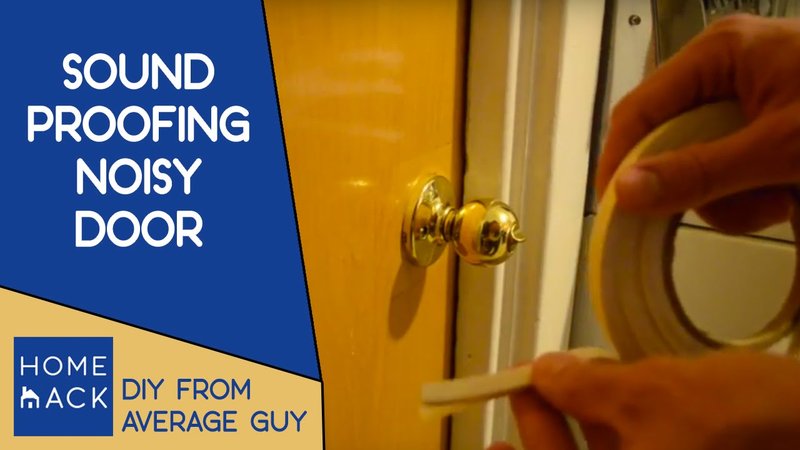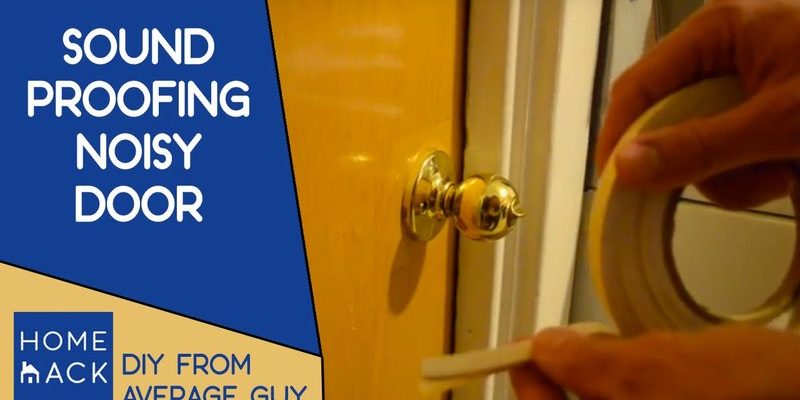
Honestly, dealing with a loud exterior door isn’t just about comfort. That noise can disturb housemates, wake up kids, or even bug your neighbors. Plus, over time, all that banging can shake things loose, mess with your locks, or even start to damage the door frame. Let me explain some easy, affordable ways to quiet things down—whether you have a classic wooden door or a fancy insulated steel model. We’ll walk through everything you need for a peace-and-quiet upgrade, without turning your house into a construction zone.
Why Exterior Doors Make That Loud Thud
Here’s the thing: exterior doors are built to be tough. They have to handle wind, weather, and would-be intruders. Because they’re solid and heavy, it’s pretty easy for them to produce a loud noise when closing—especially if they’re not cushioned properly.
Most exterior doors use heavy-duty hinges, sweeps, and weatherstripping. If any of these parts are loose, stiff, or worn out, they can turn a gentle close into a crash. Sometimes, the wind catches the door, or maybe you—or your kids—just forget to hold it and let it slam. Materials matter too. Metal and solid wood doors sound much more dramatic than hollow-core interior ones.
Think of it like a drum: a big, empty space makes a bigger sound, right? If there are gaps between the door and frame, or the frame itself isn’t super tight, it can amplify every bang. We’ll look at the best ways to soften the landing, so your door closes with a soft *thunk* instead of a house-shaking thud.
Check and Adjust the Door Closer
A door closer is that little hydraulic arm you’ll often see at the top of an exterior door, especially on storm or commercial doors. Its job? To pull the door shut gently after you let go. But if yours is set too fast or isn’t working right, it can turn a normal close into a loud slam.
First, find the tiny screws or valves that let you adjust the closing speed and power of the closer. Most brands (like Norton, LCN, or even some universal models from Amazon) make this pretty simple. Grab a ladder and a screwdriver, then gently tweak the settings; a quarter turn at a time usually does the trick.
If the closer’s leaking fluid or just isn’t doing its job no matter what, it might be time to replace it. They’re not expensive—maybe $20–$40 for a solid brand remote closer—and can completely change the way your door sounds and feels. Trust me, a little patience with these adjustments goes a long way.
Add or Replace Weatherstripping
You might be wondering how a strip of rubber or foam can make such a big difference. Weatherstripping lines the edges of your door to block out drafts, bugs, and yes—noise. Over time, it flattens, flakes, or comes loose, losing its cushion and letting that thud echo.
Here’s what you do:
- Check your current weatherstripping. Is it thin or falling off? Can you see daylight around the door edges?
- Upgrade to thicker or higher-quality material. Foam, vinyl, or silicone are all solid choices, depending on your climate.
- Install carefully. Clean the edges of the door frame first. Peel-and-stick types are easiest, but for heavy doors, you might want weatherstripping that nails or screws in for extra hold.
With fresh weatherstripping, you’ll notice the sound isn’t just quieter—it’s softer, like landing on a pillow instead of a bare floor.
Use Door Silencers or Bumpers
Door silencers (sometimes called “door dampers” or “buffer pads”) are small rubbery bits that stick inside the frame or sometimes onto the door itself. Think of them like tiny shock absorbers. When the door closes, they cushion the impact long before the wood or metal can bang against the jamb.
They’re cheap, easy to install, and they work for both modern and classic doors, even ones with fancy remotes or smart locks. Here’s how to fit them:
- Clean the frame where you’ll apply the silencer. Dust and grime can stop the adhesive from sticking.
- Stick the bumpers where the door’s corner hits the frame. Usually, you need one at each top corner and sometimes one at the bottom or middle for extra support.
- Test your door. You should feel a soft, gentle stop instead of a hard bump.
Over time, you might have to replace these, but honestly, they’re one of the best ways to silence a loud exterior door with almost no effort.
Lubricate Hinges and Check for Loose Screws
Sometimes, that thud you hear isn’t all about the door hitting the frame—it’s from stiff, squeaky, or loose hinges. If you’ve ever opened a door and heard a creak that sounded straight out of a haunted house, you know where I’m coming from.
Start by opening the door wide and looking at the hinges. See any gaps, rust, or dark stains? That’s a sign the hinge pins need a little love. Use a few drops of household oil (like 3-in-1, silicone spray, or even a dab of WD-40) on all the moving parts.
While you’re at it, check for screws that have loosened up over time. Tighten them snugly—but don’t overtighten, or you could strip the wood. A firm hinge means less movement, which means less chance for the door to rattle or slam.
Pro tip: If the hinge holes are stripped—and the screws just keep turning without grabbing—try using longer screws or packing the hole with a toothpick and wood glue before screwing back in. This keeps everything solid, which makes the whole door more stable and quieter.
Install a Soft-Close Door Mechanism
If you’re after the Cadillac of quiet, soft-close door mechanisms are the way to go. These are like the high-tech remotes of the door world: they use hydraulic or pneumatic tech to catch the door in the last few inches and pull it closed gently, no matter how hard you swing it.
You’ll see these most often on commercial doors or fancy new builds, but you can add them to almost any residential exterior door. Brands like Dorma, Hafele, and Sugatsune all make soft-close kits you can install without a call to a pro.
Installation isn’t that hard, but it does take a little time and patience. You’ll need to:
- Remove the existing closer (if you have one).
- Mount the new soft-close device according to the instructions, using the right brackets and screws.
- Test the closing speed and adjust as needed until you get that buttery-smooth finish.
Once you’ve tried this, you’ll wonder why you ever put up with doors that slam.
Try DIY Fixes With Household Materials
You don’t always need a trip to the hardware store to quiet down an exterior door. There are clever, quick fixes you can try with stuff lying around the house. Here’s a couple I recommend if you’re in a pinch:
- Use felt pads (like the ones for furniture) on the door frame. Cut them to size, peel off the backing, and stick them where the door meets the frame. Instant buffer, zero tools needed.
- Loop a rubber band over the interior knob and stretch it around the latch. When you close the door, the rubber band softens the impact—just don’t forget to remove it before locking up, or your remote entry system might not engage properly.
- Hang a small towel or sock over the top of the door (temporarily). This sounds silly, but if you’re hosting guests or want a quick noise fix, it muffles the thud until you’re ready to upgrade for good.
These tricks won’t win style points, but if you need a quiet solution for nap time or a sudden Zoom call, they work in a pinch.
When to Call in a Pro
Sometimes, no amount of DIY or clever hacks will truly silence a loud thud from an exterior door closing. If you’ve tried all of the above and you’re still getting a bang that shakes the house, it could be a sign of bigger problems—like a warped frame, a sagging door, or foundation issues.
A reputable contractor or handyman can check the fit of the door, make sure everything’s plumb and square, and even recommend or install high-end soft-close systems. This is especially smart if you’ve got a historic home or a custom exterior door (say, something with a coded remote or a fancy multi-point lock).
Sometimes, a noisy door is your house’s way of telling you it needs help deeper down. Solving the core issue early can save you from bigger headaches—and bigger repair bills—down the road.
Wrap-Up: Enjoy Peace and Quiet With an Upgraded Door
Living with a loud exterior door doesn’t have to be your reality. Whether you swap in a new soft-close closer, beef up the weatherstripping, or just stick on a few bumpers, there’s a fix that’ll work for your door style and your budget. Take it step-by-step, and you’ll notice not just less noise, but a home that feels calmer and more put-together.
In the end, it’s about making your space feel truly like yours—welcoming, peaceful, and yes, as quiet as you want it to be. No more wincing every time someone heads out to grab the mail. With just a little troubleshooting and a few handy tweaks, that loud thud can be a thing of the past.
